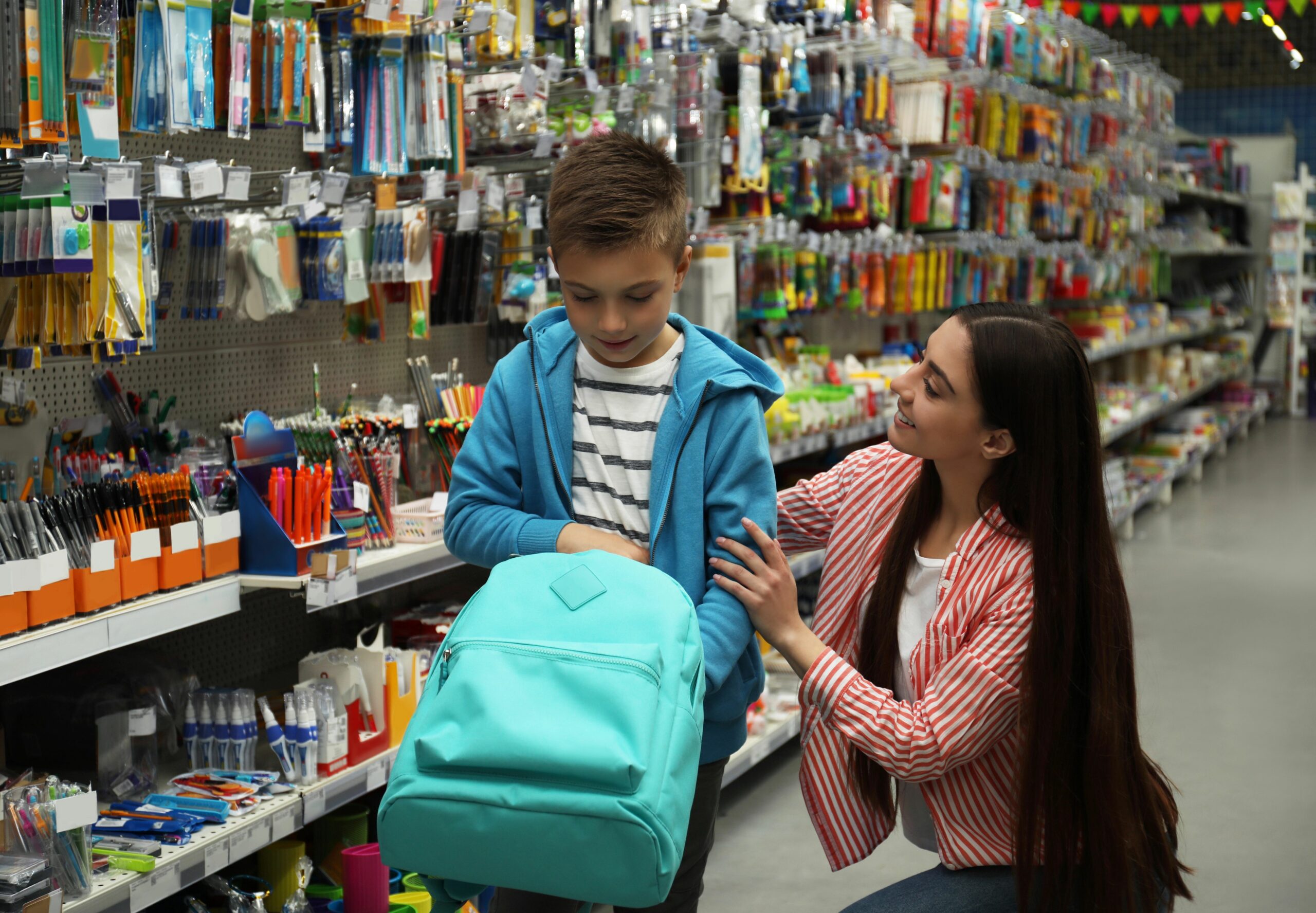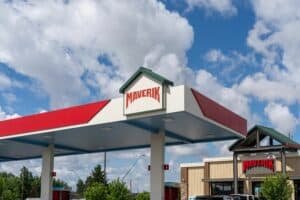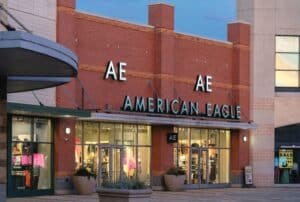
NewAfrica/Depositphotos.com
July 25, 2025
Can Competitors Sway Customers Away From Walmart, Amazon, and Target This Back-to-School Shopping Season?
With back-to-school shopping season in full swing for many, the big three retailers in the space — Amazon, Walmart, and Target — are eying what promises to be a significant amount of spend this year, according to analysts.
According to a recent report issued by JLL on the subject, parents plan to spend a whopping 21.8% more on BTS shopping in 2025, a considerable uptick well outpacing the YoY inflation rate of 3.4%.
And the results are widespread across every major income bracket, with every economic demographic suggesting increased spend this year — although wealthier households (those earning more than $150,000 per year) are upping their budgets most significantly (by 30%).
Walmart, Amazon, and Target Dominate the Current Back-to-School Shopping Market
The elephant in the room, per JLL’s survey data: Walmart, Amazon, and Target convincingly hold the top three spots concerning the question of where those polled planned to shop BTS this year.
Walmart topped the charts at 46.4%, Amazon took second place at 35.4%, and Target came in a close third at 32.6%.
The next closest retailer? Costco, at 6.5%.
Costco was followed by Old Navy (3.8%), Dollar General (2.8%), Dollar Tree (2.4%), Staples (2.1%), Macy’s (2%), and Office Depot (2%).
Other interesting findings included:
- Almost 90% of parents surveyed will interact with brick-and-mortar stores during their BTS shopping.
- For the first time in years, the most popular time to start back-to-school shopping was indicated as May or earlier, rather than August.
- While those households earning less than $50,000 per year plan to spend 52.8% on discretionary products, those earning between $50,000 and $150,000 plan to spend 64.9% on the same, and that figure jumps to 70.9% for households bringing in more than $150,000 annually.
While BTS Spend Increases, Saving Money Is Still on the Table
The results also indicated that while overall BTS spending was set to tick upward in a serious way, shoppers remained keen on saving money when the opportunity presented itself.
Lower-income households were most likely to look for sales and deals (61.5%), while parents earning more than $150,000 were more interested in reducing the total number of items purchased to trim back the BTS bill.
Lower-income households were more likely to spend less than the average (~28.4%), cut budget due to inflationary pressure, seek coupons and deals, start shopping in July and August, shop at two to three retailers, and shop at mass merchandisers, dollar, or thrift stores.
Higher-income households, on the other hand, were more likely to spend considerably more than the average, and their own spend last year; buy private-label products to cut costs; shop at a mall or use BOPIS (buy online, pick up in store); shop at six or more different retailers; shop early, or at least start in June; shop at bookstores, home goods, and department stores; and, as mentioned earlier, drop more spend on discretionary items.
Interestingly, moms were more likely to search for sales, buy fewer items, and reuse existing products; by contrast, dads were more likely to buy secondhand goods.
A separate report on back-to-school spending put forth by ICSC suggested that reusing existing supplies was gaining traction more broadly, with 28% of respondents to its survey indicating as much.
Discussion Questions
Can competitors sway customers away from “the big three” retailers during the back-to-school shopping season? Why or why not? If so, what steps might need to be taken?
Is it worthwhile, given the gulf in shopper intention, for competitors to launch marketing campaigns to attract attention and traffic to their stores, hoping to build long-term loyalty?
Poll
BrainTrust
Nicholas Morine
Recent Discussions







Walmart, Amazon, and Target remain the primary destinations for back-to-school shopping. This is largely thanks to their winning combination of convenience, value, and comprehensive assortments – the trifecta of factors parents prioritize most. But they’re far from the only players. Retailers like Marshalls, Dick’s, Old Navy, Macy’s, and Kohl’s also capture spend, often by catering to more specific needs such as apparel or sports gear. For back-to-college, IKEA performs well, because of its great price points and style for dorm furnishings. So, back-to-school and college market share is not overly concentrated – certainly not as much as this survey suggests.
I am making a good salary from home $1400-$2400/week , which is amazing, under a year back I was jobless in a horrible economy. I thank God every day I was blessed with these instructions and now it’s my duty to pay it forward and share it with Everyone,
.
Here is what I do…… https://rb.gy/y4j09o
With all due respect: what tripe! Not that these companies will be a destination, of course, but that there’s anything new, or otherwise remarkable about it: these are stores that people routinely visit for other reasons, they sell the types of things people buy for school – supplies, everyday clothing – so of course they’re going to be frequently mentioned; there’s nothing in here that says “exclusively”, so it’s just plain wrong to say other retailers “aren’t competing”. But what is remarkable is how poorly macy*s fared: department stores were once a haven for BTS, and – even with all the negativity that surrounds them – 2% is a shockingly low number.
I do love the use of the word tripe! A much underused word. I am also suspect of the numbers. The fact Dick’s isn’t on there – and we know from our actual spending data that it gets a considerable uplift from back to school – suggests that there is the usual mismatch between what consumers say in surveys and what they actually do.
Strategically, for BTS, the big three are acting as convenience magnets for shoppers’ dollars. What is surprising is how strong Costco performed, capturing more BTS share than Old Navy, Dollar General, and Macy’s combined. Given Costco’s limited assortment range, the key to competing is owning a specific moment in the customer journey; in the case of Costco, they own the early bulk provisioning moment. The rest of the retail world can’t compete on the big three’s comprehensive assortment (being everything to everyone). Instead, they should identify and target specialized or underserved moments (differentiation based on timing and psychology) with a focused assortment that serves specific shopping mindsets rather than comprehensive needs.
Is today’s “convenience, convenience, convenience” yesterday’s “location, location. location”?
The big three elephants offer everything one needs for BTS. After that, there isn’t much incentive to go anywhere else.
They are winning because they combine availability with convenience and reasonable prices. For time starved parents there is little incentive to shop for alternatives unless it is a hyper local store attached to the community that they wish to support.
I’m not quite ready to say that all other retailers should just throw up their hands and cede their market share to the Big 3. Not for the next decade or two anyway. The Big 3 enjoy the same competitive advantages for BTS that they enjoy 24/7/365. Solid assortments, conveniece and value make for a pretty powerful package. But that’s the same story 24/7/365. So retailers everywhere will always have the challenge of curating to some level of distinction, and offering their own package of convenience and value.
Hopefully customers will remain curious creatures who will always want to Explore + Experiment. As long as retailers can keep tapping into that curiosity they will have a shot. Except these days it’s not as simple as running yet another promotion or going a little bit deeper than previous discounts.
The Big 3 retailers have a lock on back-to-school traffic because their assortments cover multiple in-demand categories. While dollar store chains help with affordable school supplies, they don’t sell a range of apparel or electronics to handle everything on students’ and parents’ shopping lists.
Although Walmart, Amazon, and Target will command a large share of BTS spending, the dollar channel has upped their games. Perhaps I haven’t been paying attention to recent advertising (maybe because I’m no longer the BTS demographic), I’m not seeing much hype about back to school sales, etc.